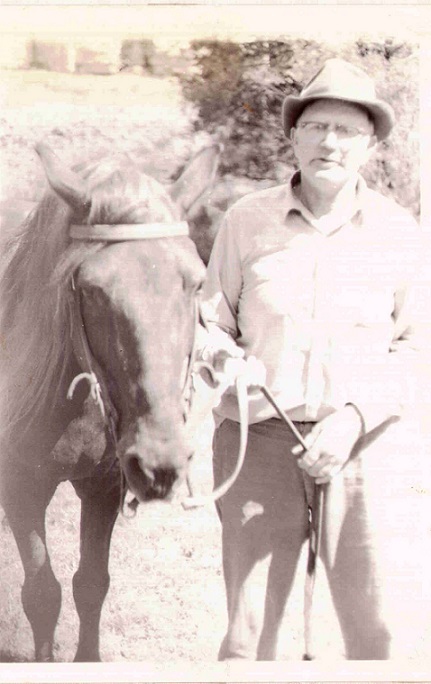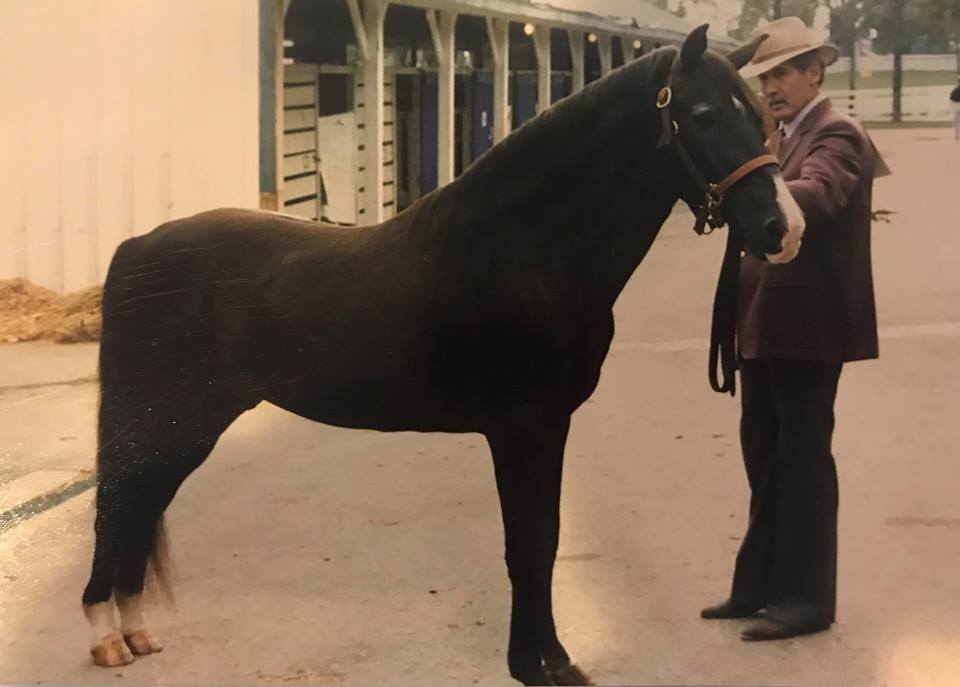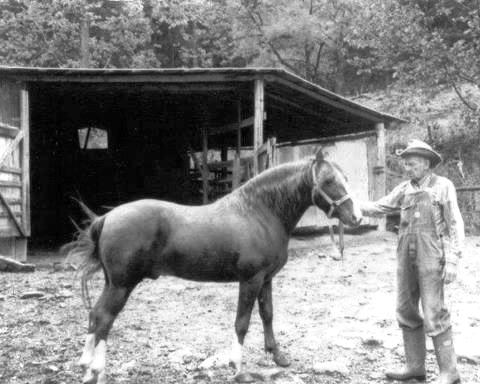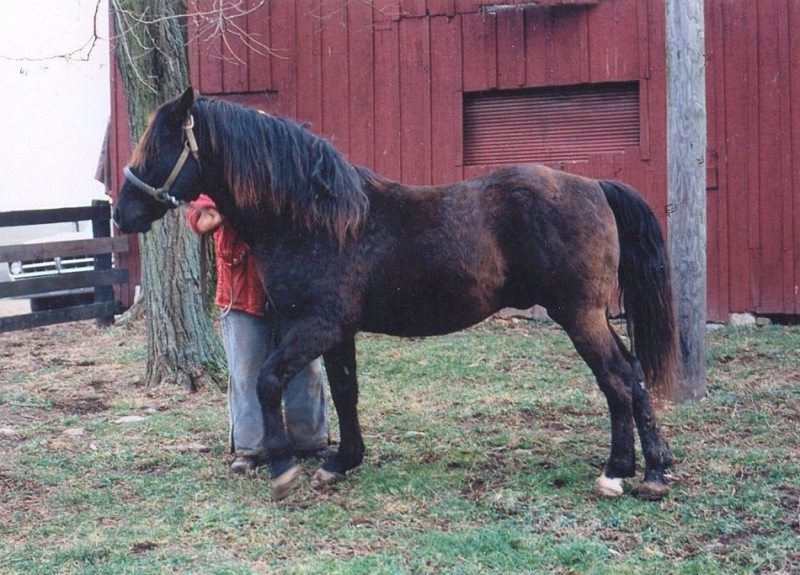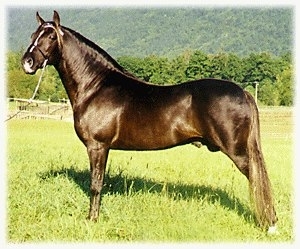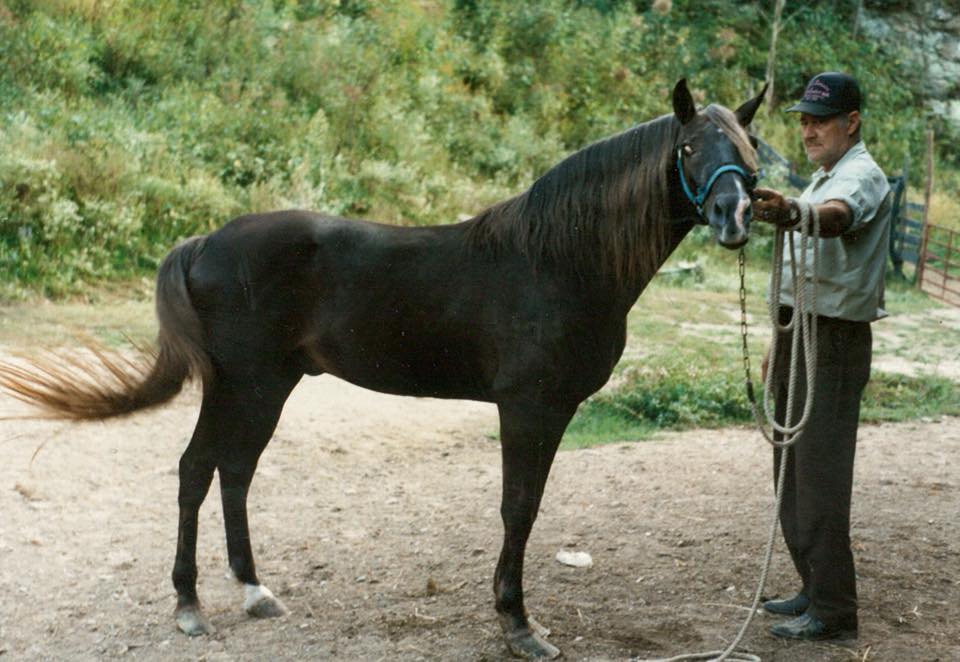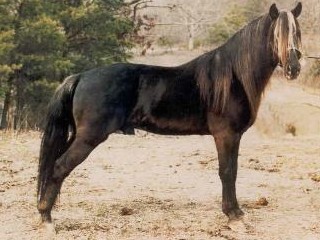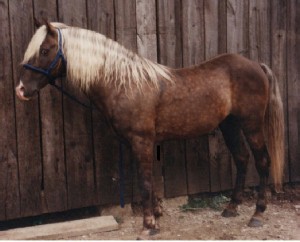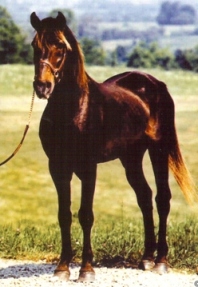Old Time Mountain Horses
The history behind the Mountain Horse is fascinating. While the registry for the Rocky Mountain Horse only goes back to 1986, mountain horses have a long history and development in the remote mountains of Eastern Kentucky. Originally called “Kentucky Saddlers”, they are a breed of horses known for their gentle disposition, fabulous gait and stout conformation. These three characteristics are what made the breed so valuable as a using horse to the people of Eastern Kentucky and what made them VASTLY popular after the registry was formed. How important these three characteristics were to the families owning and using these horses cannot be overstated. These horses were used for plowing fields, efficient transportation in an era where there were poor roads and were trusted around families, especially small children. These horses did not receive extravagant care and were often turned out into the mountains to survive the winters on their own. These were (and still are) TOUGH horses. These were the horses that formed the foundation of all the mountain horse breeds we see today.
Rocky Mountain Horses
are one branch off this family of mountain horses. They have a strong genetic influence of one particular sire- Tobe, a horse kept and bred by Sam Tuttle. Tuttle would tell the story that around 1890, a young colt from the Rocky Mountain region was traded in Eastern Kentucky. After this colt matured, he sired several prominent stallions, which became famous in their counties. One of these stallions was kept and bred by Sam’s uncle, H.B. Hawkins. Descendants of the Stud Colt of 1890 interbred with the native Appalachian Mountain Horse stock and eventually became a land race of horses known as “Rocky Mountain Horses”. It was this cross that retained the best characteristics of mountain horses: people oriented, easy keepers, quiet, willing attitude, stout conformation and smooth gait.

Sam Tuttle lived in Estill County, Kentucky is acknowledged as one of the people responsible for helping preserve and promote these horses at a time when horses had little value and many were being sold for dog food. Tuttle used these horses at his horse riding concession at Natural Bridge State Park in Kentucky. Obviously, Tuttle had a need for a large number of sound, easy going horses that were easy and fun for novices to ride. His selection criteria for keeping horses in his herd was unusually strict–only horses that could be ridden with a piece of baling twine around their neck were kept for his riding concession. Under this man’s supervision, only the quietest, smoothest mares and stallions were kept and bred.
The Tobe horse- father of the modern day Rocky Mountain Horse
Tobe was one of the stallions that Sam Tuttle stood at his farm and occasionally used at the riding concession. Sam often said that Tobe’s lineage could be traced back to that famous colt from 1890, and this is where his signature chocolate color is thought to come from. While we may never know for sure the connection of Tobe and this famous stallion from 1890, we do know that Tobe was revered for being the quietest and most easy going horse at the concession. In fact, Tobe was trusted to carry the most inexperienced of riders, despite being a breeding stallion. Even a half a century later, old timers speak in reverent tones of the time, as a kid, they got to ride Tobe at Natural Bridge State Park.
Tobe was used extensively for crossing to Sam Tuttle’s mountain horse stock, and sired many foals over the years. These horses were known for having a better conformation than Tobe, a quiet and gentle disposition, and of course, a smooth ride. Five of Tobe’s sons, Kilburn’s Chocolate Sundown, Sam Clemon’s Tim, Jim Sewell’s Sam, Maple’s Squirrel and Yankee, became famous as foundation stallions of the newly developed Rocky Mountain Horse breed. A quick perusal through the registry paperwork of horses within the breed will likely show at least one of these famous horses.
Tobe was revered for being the quietest and most easy going horse at the concession, trusted to carry the most inexperienced of riders, despite being a breeding stallion.
Each son was distinct in his own way. Kilburn’s Chocolate Sundown was a flashy chocolate with a flaxen mane and tail and two socks and belonged to Charles Kilburn of Morrow, Ohio. Kilburn’s Chocolate Sundown was quickly recruited by Sam Tuttle for breeding to his own mares, and Sam often referred to Kilburn’s Chocolate Sundown as the “Ohio Horse” for this reason. Tim belonged to Sam Clemons, who used him primarily for breeding. Tim’s get are known for their excellent conformation, stout bodies and were flashy enough to win a show. Both Kilburn’s Chocolate Sundown and Tim were known for having big motors, but true to their mountain horse breeding, had enough sense to be even tempered horses. The last son of Tobe, Yankee, was also kept by Tuttle at the county fair grounds and was occasionally bred to Tuttle’s Horses.
Sewell’s Sam and Maple’s Squirrel are the two sons that are most remembered for their remarkably gentle dispositions. Sam was owned by Jim Sewell, who kept some of the finest mountain horse stock. Jim is quoted as saying, that “you couldn’t make Sam hurt you”- a wonderful testament to this horse with a white mane and tail. Similarly, Maple’s Squirrel is famous for being a gentle stallion that made a superb trail horse. Many horsemen had a chance to trail ride alongside this stallion would remark on how Squirrel would go anywhere their rider wanted to go. The willing to please attitude is how this black horse with a snip earned his name, because “he could climb a mountain like a squirrel climbing a tree”. Lastly, Maple’s Squirrel was noted for being exceptionally tolerant of children, having spent much of his life with the Davis Family at the Horseplay farm. The Davis grandchildren literally grew up playing around and on this gentle stallion.
It doesn’t take much imagination to figure out why we gravitated towards the bloodlines that we did. I love Tim horses for their beauty and superb conformation, Kilburn’s Chocolate Sundown horses for their go, flash and stout conformation, the Sam horses for their beauty and temperament, and the Squirrel horses for their calm, sensible nature and rock solid gait.
Our goal is to produce horses that maintain the best qualities of the Rocky Mountain Horse breed. True using horses that can be hitched to a log to help bring in that winter’s firewood or trusted to carry a novice rider through difficult terrain. Horses that have brains enough to care for a rider, and have motor enough to top out the highest pass. Horses bred for the rugged county we live in. Places where small farms are still the norm, and each horse has to earn their keep.

More History
Appalachian Equine Project — an Oral History of the Mountain Horse and Appalachia
Rocky Mountain Horse Association
Mountain Pleasure Horse Association








